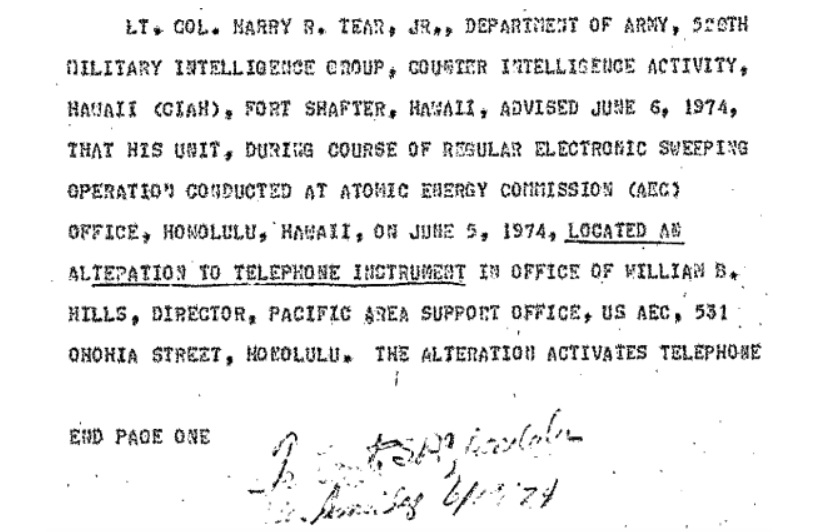
According to the file, the bug was discovered by one Lt. Colonel Harry Tear Jr., assigned to Army counterintelligence at Fort Shafter. While performing a regular electronics sweep in June of 1974, Tear discovered a modification to the phone of Williams Hills, who was the Director for the Atomic Energy Commission’s Pacific Area Support Office, reporting to the Nevada Operations Office.

When it was discovered, the phone wasn’t being used to monitor the room. The file notes, however, that it easily could be. When connected, the phone wouldn’t just transmit the conversation being held, but every conversation in the room that happened to be in range of the phone’s receiver. They were unable to determine when it had been installed or how often it had been used, but noted that the wiring appeared to have been done professionally. They were also able to confirm that the device could pick up conversation in the room in practice, not just in theory...
And now for some good advice if you find an electronic surveillance device...
...Simply knowing what information has gotten out does little good without an idea of who will have it, and it’s next to impossible to judge how information will be used without knowing who has it. This is one of the primary reasons for law enforcement to leave a bug in place. While counterintelligence officers would also be interested in the same information, a clever officer or group of officers would use the bug as a way of feeding the listener specific information and misinformation in order to manipulate them in various ways. more
